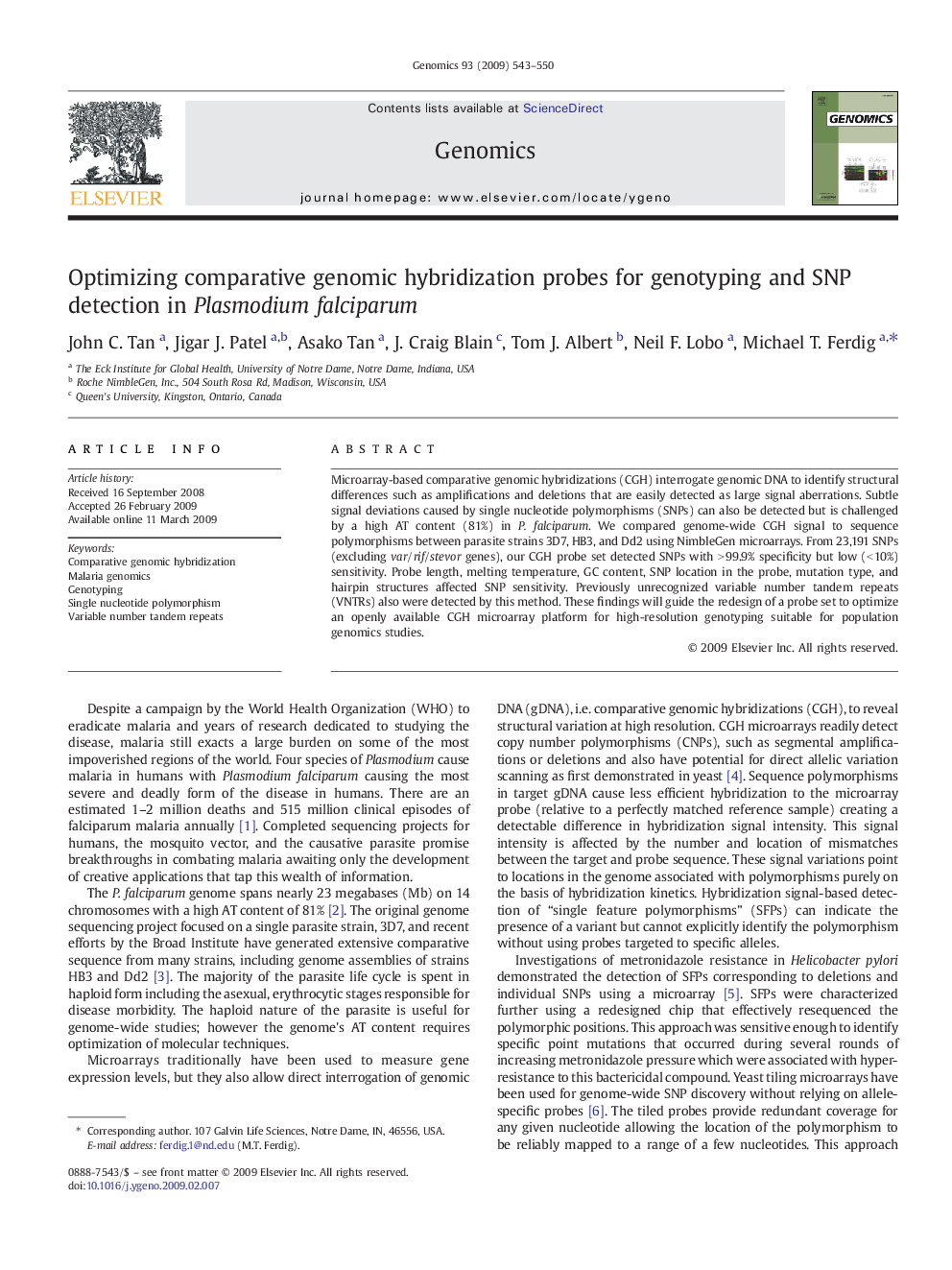| Article ID | Journal | Published Year | Pages | File Type |
|---|---|---|---|---|
| 2821167 | Genomics | 2009 | 8 Pages |
Microarray-based comparative genomic hybridizations (CGH) interrogate genomic DNA to identify structural differences such as amplifications and deletions that are easily detected as large signal aberrations. Subtle signal deviations caused by single nucleotide polymorphisms (SNPs) can also be detected but is challenged by a high AT content (81%) in P. falciparum. We compared genome-wide CGH signal to sequence polymorphisms between parasite strains 3D7, HB3, and Dd2 using NimbleGen microarrays. From 23,191 SNPs (excluding var/rif/stevor genes), our CGH probe set detected SNPs with > 99.9% specificity but low (< 10%) sensitivity. Probe length, melting temperature, GC content, SNP location in the probe, mutation type, and hairpin structures affected SNP sensitivity. Previously unrecognized variable number tandem repeats (VNTRs) also were detected by this method. These findings will guide the redesign of a probe set to optimize an openly available CGH microarray platform for high-resolution genotyping suitable for population genomics studies.
